| Roses are best known as ornamental plants grown for their flowers in the garden and sometimes indoors. They have been also used for commercial perfumery and commercial cut flower crops. Some are used as landscape plants, for hedging and for other utilitarian purposes such as game cover. They also have minor medicinal uses. |
| Ruby Meidiland |
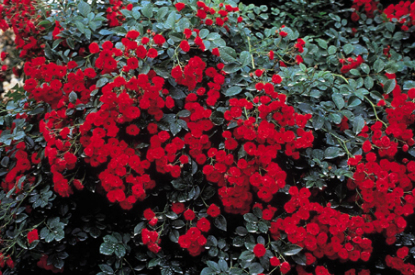 |
A wonderful low mounding hedge with abudant clusters of small, double ruby red blooms and glossy, rich green foliage. The mounding ground cover growing habit makes it an ideal companion for perennial and mixed borders, as well as for low growing hedge of foundation plantings.
|
| White Meidiland Rose |
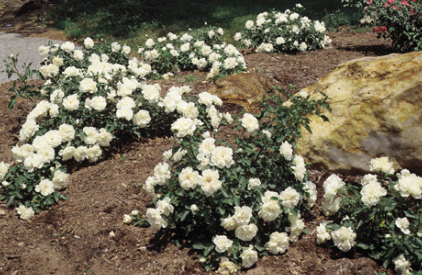 |
This Meidiland rose blooms from early spring until freezing cold, and what blooms! Three to four inches wide, pure white, the plentiful blooms make beautiful flower arrangements, especially arranged with reds and blues. Plant them about 4 feet apart, where they grow so low with foliage so thick it can stop weed growth beneath them. Planted more closely, they’re like a snowdrift on display, especially on slopes.
|
| Fuchsia Meidiland |
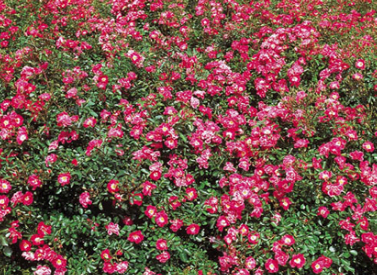 |
A special addition to the winning Meidiland family, this rose grows just knee-high, and much like Scarlet Meidiland except it’s much lower growing and blooms earlier. It also spread more widely – up to 5 feet wide per plant! Some landscapers now use this rose as a groundcover! Two-tone, 2 inch blossoms are interesting. They’re dark red on the top of the petals, changing to cardinal red on the lower side. Blooms cover its abundant, glossy-green foliage throughout the entire growing season. |
| Mr. Lincoln Hybrid Tea Rose |
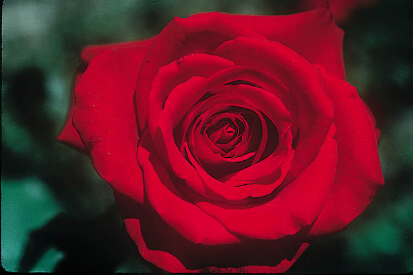 |
Other red roses are judged by this standard. Exceptional color, large fully double blooms, very fragrant. |
| Peace Hybrid Tea Rose |
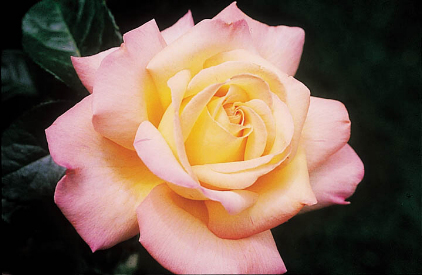 |
So good it never goes out of style, more popular today then when first introduced. Very large, very full, mild fragrant blooms. |
|
John F. Kennedy Hybrid Tea Rose
|
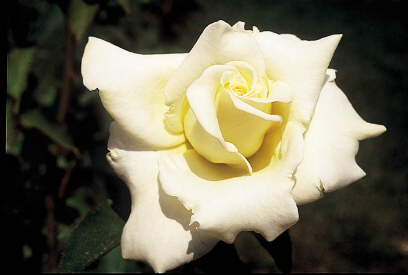 |
Long, classic buds with an unusual greenish cast unfurl to sparkling white blooms. Mild-licorice fragrance. |
|
Rainbows End Sunblaze™ Rose
|
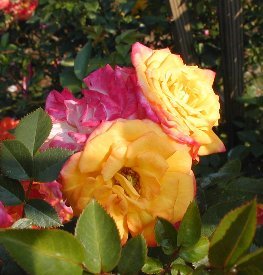 |
Deep yellow-blush roses are the “pot of gold” for your rainbow garden. Excellent for landscapes.
Hearty and Easy to Grow Sunblaze Roses
The most versatile roses you will find. Drought and disease tolerant, continuous flowering. Compact 15 to 18 inches tall. Well shaped plants that can be used to brighten up containers, flower boxes or as a perfect addition or replacement to fall Mums. |
|
Lavender Sunblaze™ Rose
|
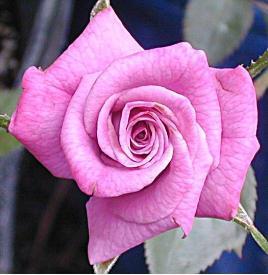 |
An addition to the Sunblaze family this year in a beautiful shade of lavender-mauve. Well shaped blooms.
Hearty and Easy to Grow Sunblaze Roses
The most versatile roses you will find. Drought and disease tolerant, continuous flowering. Compact 15 to 18 inches tall. Well shaped plants that can be used to brighten up containers, flower boxes or as a perfect addition or replacement to fall Mums. |
| Blaze Rose |
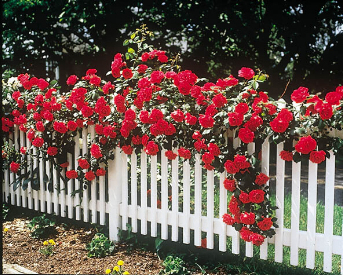 |
My Father grew roses before I was born, and we still keep our rose gardens. Our Improved Blaze resists pests as it blooms and blooms from early summer to October – even in part shade. Plant Blaze to transform bare walls, fences, trellises, whatever. Grows into an excellent head-high fence. |
| Golden Showers Rose |
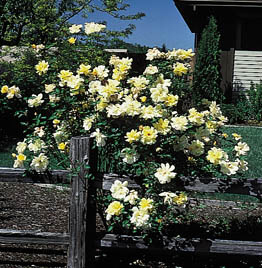 |
We’ve been asked for a yellow climber as hardy as our Blaze, and here it is. Golden Showers is a lovely companion planted with Blaze, or a blanket of foliage and golden color planted by itself. Plant it same as Blaze. |
| White Dawn Rose |
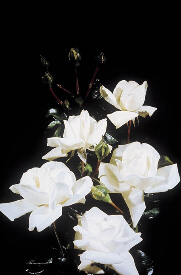 |
White Dawn Added for those who want something different in a climber. Fragrant, pure white gardenialike blooms. Considered by many as the best repeat blooming climber. Pure white color Your choice. Mix or match Blaze, Golden Showers, White Dawn. |
| Pink Knock Out |
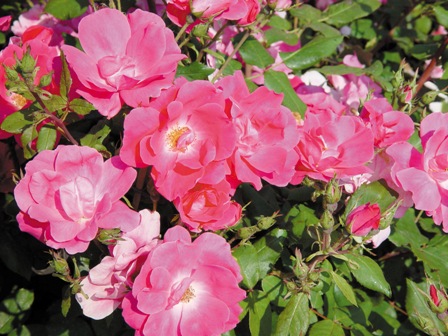 |
A beautiful, powerful pink color on non-stop blooms. PPAF.
Knock Out® roses are a glowing example of disease resistance at it's best. Almost nothing stops these beauties from blooming, needs only 2-3 hours of sun a day. Bloom and growth show color from early spring until hard frosts. Carefree and thrives in humid climates whre most other plants require spraying and maintenance, does not need to be deadheaded. All five beautiful Knock Out® roses we offer are hardy to -25 degrees and grow 3' high and 3' wide. Beautiful roses that you will not want to be without for your garden or landscape. |
| Knock Out |
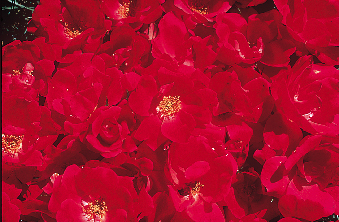 |
Deep, almost fluorescent cherry red blossoms, and dark, moss-green foliage will win your heart! PP#11836
Knock Out® roses are a glowing example of disease resistance at it's best. Almost nothing stops these beauties from blooming, needs only 2-3 hours of sun a day. Bloom and growth show color from early spring until hard frosts. Carefree and thrives in humid climates whre most other plants require spraying and maintenance, does not need to be deadheaded. All five beautiful Knock Out® roses we offer are hardy to -25 degrees and grow 3' high and 3' wide. Beautiful roses that you will not want to be without for your garden or landscape. |
| Blushing Pink Knock Out |
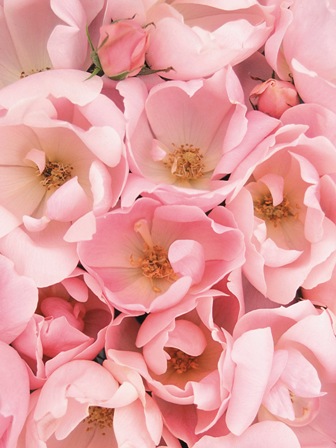 |
A light pink color changes into a remarkable shell pink as the blooms age. PPAF
Knock Out® roses are a glowing example of disease resistance at it's best. Almost nothing stops these beauties from blooming, needs only 2-3 hours of sun a day. Bloom and growth show color from early spring until hard frosts. Carefree and thrives in humid climates whre most other plants require spraying and maintenance, does not need to be deadheaded. All five beautiful Knock Out® roses we offer are hardy to -25 degrees and grow 3' high and 3' wide. Beautiful roses that you will not want to be without for your garden or landscape. |
| Rainbow Knock Out |
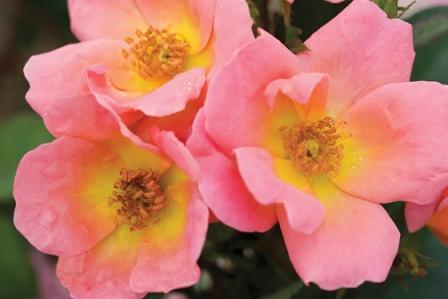 |
Shades of pink and yellow, medium beautiful blooms.
2007 AARS winner. PPAF
Knock Out® roses are a glowing example of disease resistance at it's best. Almost nothing stops these beauties from blooming, needs only 2-3 hours of sun a day. Bloom and growth show color from early spring until hard frosts. Carefree and thrives in humid climates whre most other plants require spraying and maintenance, does not need to be deadheaded. All five beautiful Knock Out® roses we offer are hardy to -25 degrees and grow 3' high and 3' wide. Beautiful roses that you will not want to be without for your garden or landscape. |
| Double Knock Out |
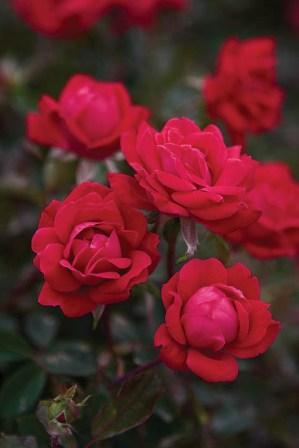 |
Sibling of Knock Out® with a sophisticated "true-rose" look and an abudance of small double flowers. PP#16,202
Knock Out® roses are a glowing example of disease resistance at it's best. Almost nothing stops these beauties from blooming, needs only 2-3 hours of sun a day. Bloom and growth show color from early spring until hard frosts. Carefree and thrives in humid climates whre most other plants require spraying and maintenance, does not need to be deadheaded. All five beautiful Knock Out® roses we offer are hardy to -25 degrees and grow 3' high and 3' wide. Beautiful roses that you will not want to be without for your garden or landscape. |
| Sunny Knock Out Rose |
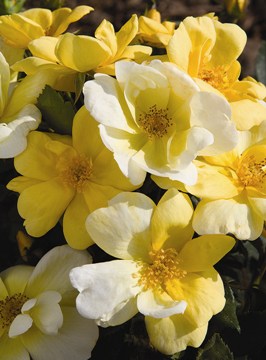 |
Our Newsest Addition to the Knock Out Family.
Attractive dark foliage with yellow blooms and a sweet fragrance! Sunny has a slightly |
| Coral Drift Rose |
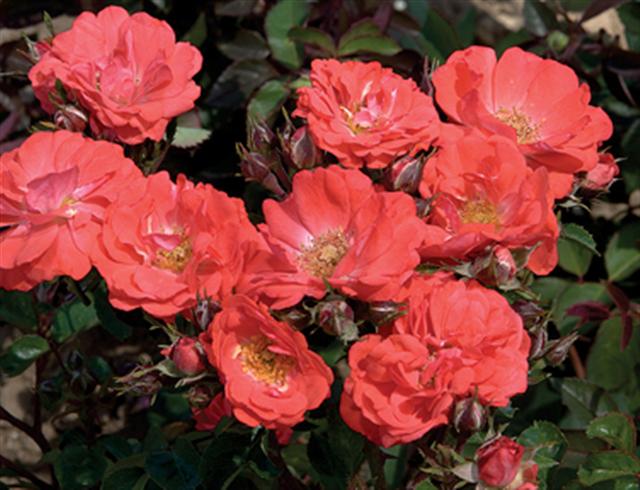 |
A cross between full size groundcover roses and miniatures, Drift® roses were created to increased consumer demand for smaller, ever-blooming plants. Repeat blooming from spring until frost with attractive foliage these naturally dwarf Drift® roses have a low spreading habit and are ideal for small gardens and combination planters. Plant to brighten up borders fill in empty spaces or to spread delicately around established plants. Good resistance to rust powdery mildew and black spot, they require no spraying except in the most black spot prone areas. |
| Red Drift Rose |
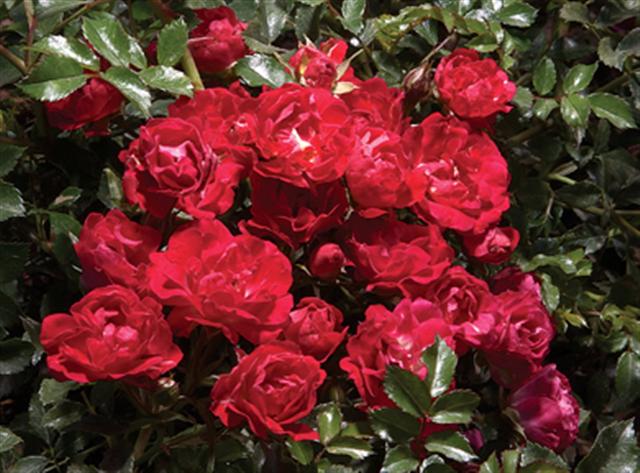 |
A cross between full size groundcover roses and miniatures, Drift® roses were created to increased consumer demand for smaller, ever-blooming plants. Repeat blooming from spring until frost with attractive foliage these naturally dwarf Drift® roses have a low spreading habit and are ideal for small gardens and combination planters. Plant to brighten up borders fill in empty spaces or to spread delicately around established plants. Good resistance to rust powdery mildew and black spot, they require no spraying except in the most black spot prone areas. |